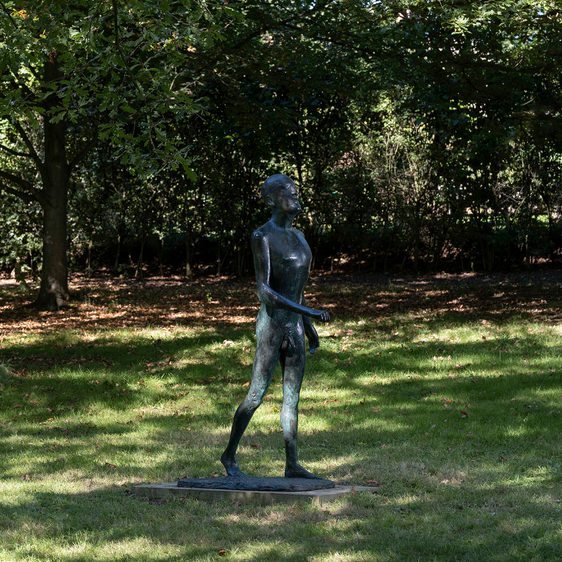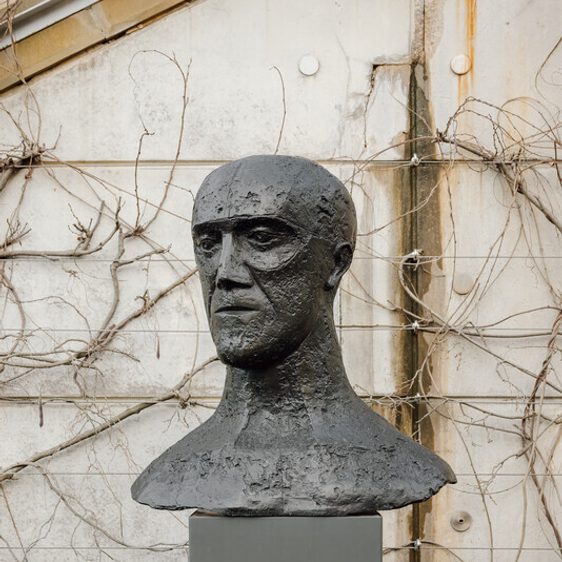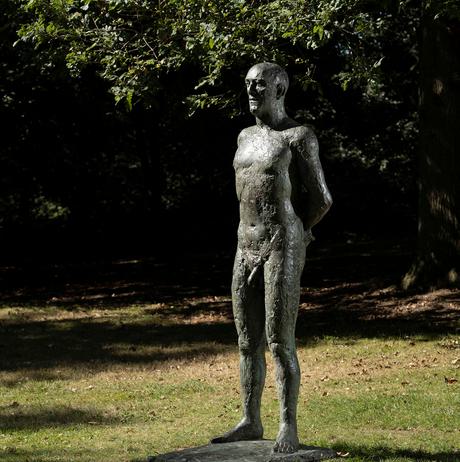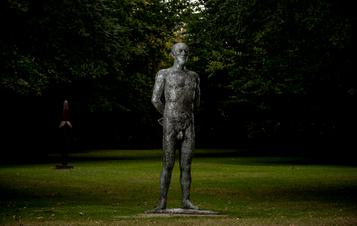
Elisabeth Frink: Standing Man
Art Outdoors /Elisabeth Frink: Standing Man
Elisabeth Frink was part of a generation of artists who drew upon their experiences during the Second World War. Throughout her career she made sculpture based on animal and human forms, and sometimes combining them to create hybrids. She made many sculptures of male figures which often embodied a conflict between strength and vulnerability.
Fragility can be seen in their textured surfaces, evoking exposed flesh, as with Standing Man. Frink was more concerned with representing mankind than with portraits of individuals. Standing Man is a quiet observer, watching over the world.
Standing Man relates strongly to Frink’s Riace figures. These solitary individuals combine strength with a sense of quiet observation and isolation. Like the larger-than-life Riace figures, these works show the male form as muscular and powerful.
An exhibition of Frink’s sculpture, prints and plaster models – Natural Connection – is on display at The Weston until 23 February 2025.
Courtesy The Frink Estate and Yorkshire Sculpture Park.
You might also like
- Art Outdoors

Elisabeth Frink: Protomartyr
Protomartyr represents the first Christian martyr, Saint Stephen, who provided food and aid to poor members of his community in Jerusalem. - Art Outdoors

Elisabeth Frink: In Memorium II
Frink succeeds in capturing a sense of defiance with In Memoriam II as the features of the figure express great sadness but also a sense of dignity. - Art Outdoors

Elisabeth Frink: Atlas
In Greek mythology, Atlas is a figure responsible for holding the heavens aloft. This sculpture combines several themes that Frink returned to throughout her career: strength and endurance alongside burden and vulnerability. - Art Outdoors

Elisabeth Frink: Riace II, III and IV
The Riace figures are inspired by the 5th century BCE bronze sculptures that were rediscovered in the sea off the coast of the Riace region of Italy in 1972.

